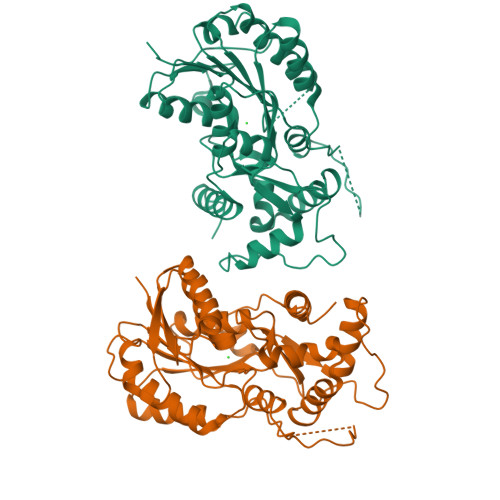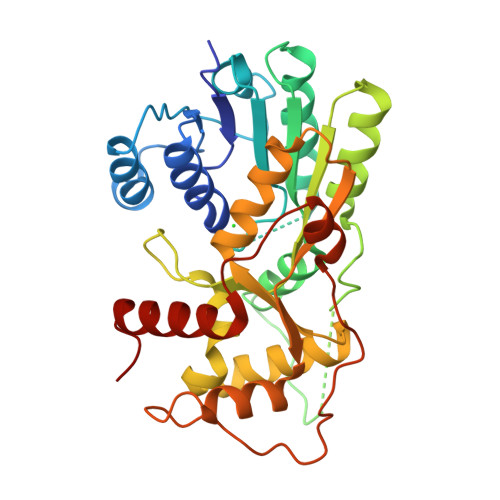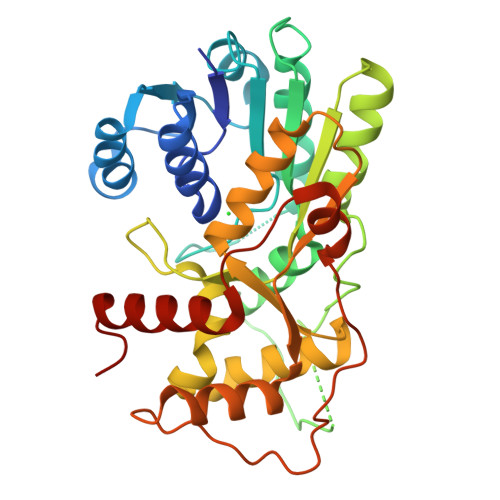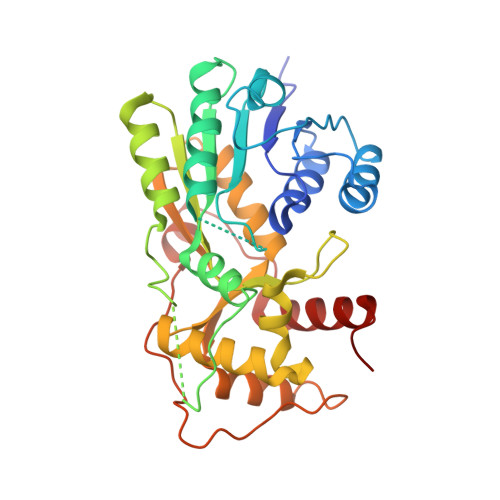Structure and epimerase activity of anthocyanidin reductase from Vitis vinifera.
Gargouri, M., Manigand, C., Mauge, C., Granier, T., Langlois d'Estaintot, B., Cala, O., Pianet, I., Bathany, K., Chaudiere, J., Gallois, B.(2009) Acta Crystallogr D Biol Crystallogr 65: 989-1000
- PubMed: 19690377
- DOI: https://doi.org/10.1107/S0907444909025013
- Primary Citation of Related Structures:
2RH8, 3HFS - PubMed Abstract:
Together with leucoanthocyanidin reductase, anthocyanidin reductase (ANR) is one of the two enzymes of the flavonoid-biosynthesis pathway that produces the flavan-3-ol monomers required for the formation of proanthocyanidins or condensed tannins. It has been shown to catalyse the double reduction of anthocyanidins to form 2R,3R-flavan-3-ols, which can be further transformed to the 2S,3R isomers by non-enzymatic epimerization. ANR from grape (Vitis vinifera) was expressed in Escherichia coli and purified. Unexpectedly, RP-HPLC, LC-MS and NMR experiments clearly established that the enzyme produces a 50:50 mixture of 2,3-cis and 2,3-trans flavan-3-ols which have been identified by chiral chromatography to be 2S,3S- and 2S,3R-flavan-3-ols, i.e. the naturally rare (+)-epicatechin and (-)-catechin, when cyanidin is used as the substrate of the reaction. The first three-dimensional structure of ANR is described at a resolution of 2.2 A and explains the inactivity of the enzyme in the presence of high salt concentrations.
Organizational Affiliation:
Chimie et Biologie des Macromolécules et des Nanoobjets UMR CNRS 5248, Bâtiment B8, Avenue des Facultés, Université Bordeaux 1, Talence CEDEX, France.


















